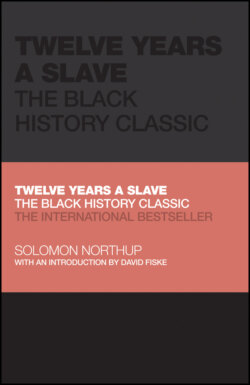Читать книгу Twelve Years a Slave - Solomon Northup - Страница 15
RECEPTION AND IMPACT
ОглавлениеWhen Twelve Years a Slave was released in the summer of 1853, it was received very well by the public. Though not as popular as Harriet Beecher Stowe's Uncle Tom's Cabin, a work of fiction, many readers liked that Northup's book related actual events. One reader recommended the book to “those persons who are so conscientious that they will not read ‘Uncle Tom's Cabin' because they say it is a Novel” and promised that after reading Northup, “they [would] acquit Mrs. Stowe of all exaggeration.” (6)
In the mid-nineteenth century the abolitionist movement was strong, but many Americans felt that slavery was basically the hand dealt to African Americans. For people living in the North who had little direct contact with the “peculiar institution,” it was not something that impacted their daily lives. However, they often encountered free blacks, who provided various services in their communities. That a decent, industrious man like Northup could be lured away from home, held in a slave pen, spirited away to the deep South, and made into a slave – this was unacceptable. Thus Twelve Years a Slave, while preaching to the congregation of those who hated slavery, also likely made converts of many who were still unsure of what they thought.
Abraham Lincoln, in a speech in 1854, estimated that if all the nation's free people of color were made into slaves, they would be worth $200 million. (7) So long as the United States had a population of blacks who were divided into free and slaves, kidnapping was arguably too profitable to disappear.
As a first-hand account that detailed the process of kidnapping from the inside, Twelve Years a Slave mostly stands alone in documenting the crime. There is also the Narrative of Stephen Dickenson, Jr. (8), and the Narrative of Dimmock Charlton. The former tells how three African American sailors were removed from the steamship they worked on, taken to a slave pen, and sold as slaves. The latter details how a black man – rescued from the slave trade by the British – was taken from a warship as a prisoner of war during the War of 1812, and then made into a slave in America.
In a 1999 lecture, historian Joseph Logsdon (who with Sue Eakin produced the first scholarly edition of Twelve Years a Slave) stated that he had begun the assignment thinking that kidnapping was rare. He quickly learned it was a reasonably common crime. Northup's narrative stands in for the many victims who did not have their stories told.
